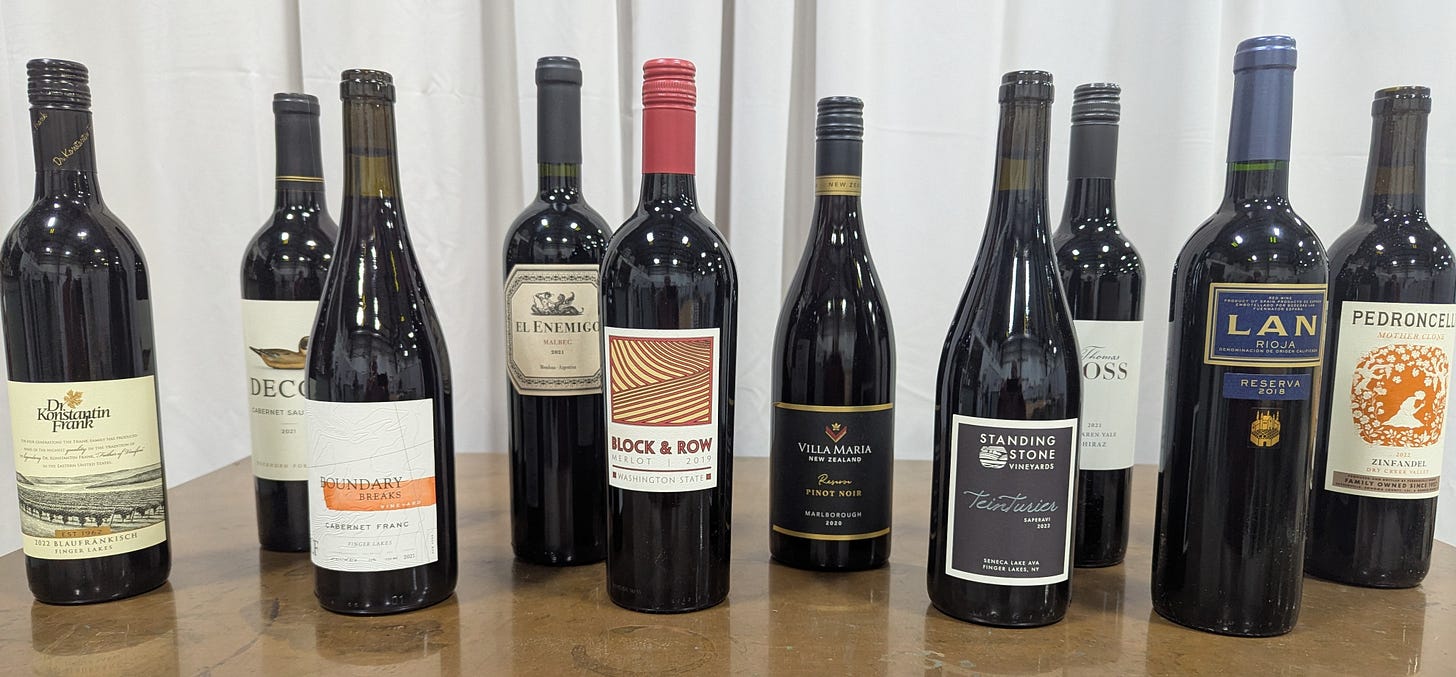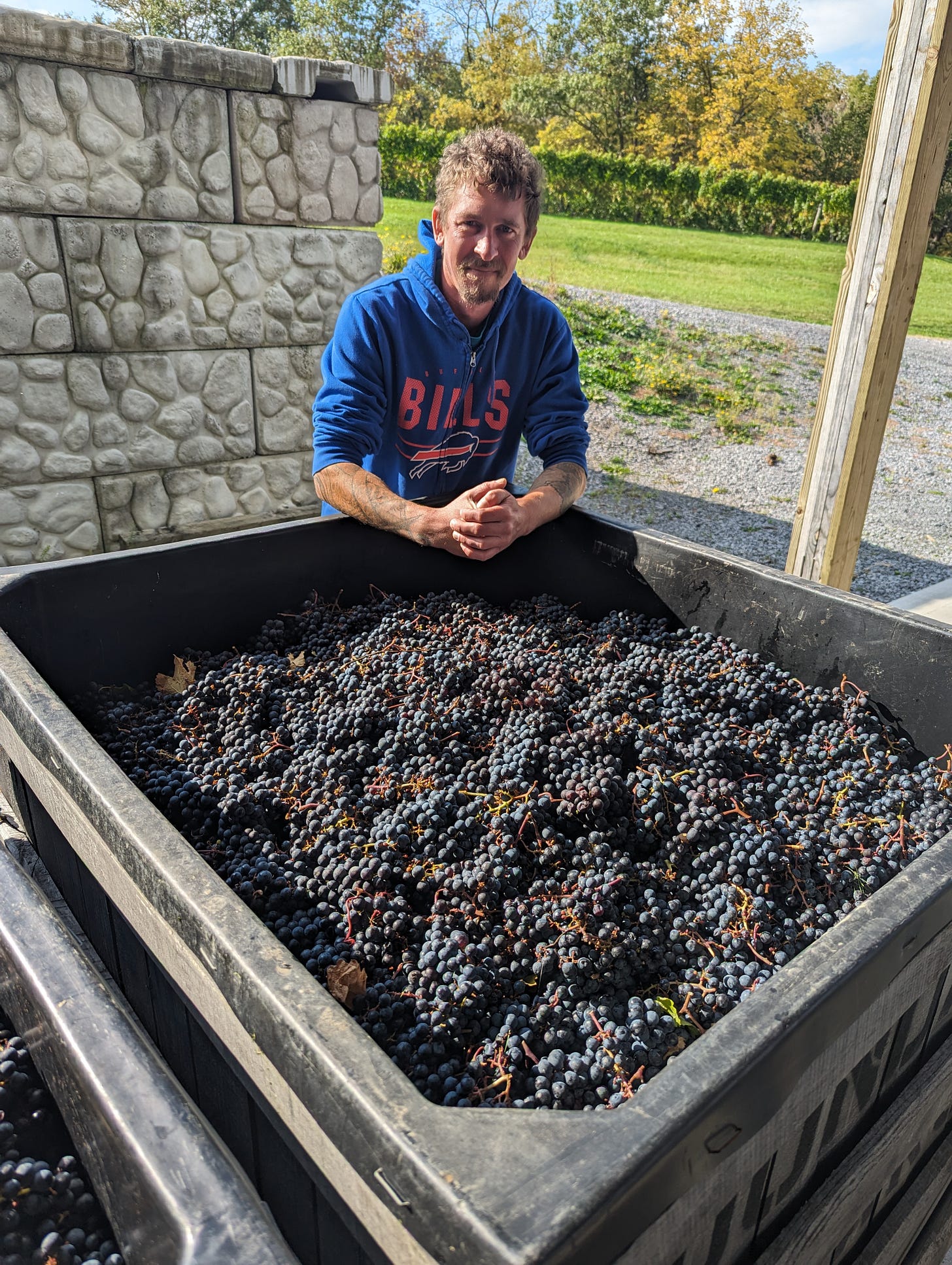#143 Part II: Anatomy of 94-Pt Cab Franc
Fifteen years ago, Cabernet Franc wines would not have received such high scores
In last week’s Substack #142, we wrote about how wine critic James Suckling’s recent reviews of more than 75 New York Cabernet Franc wines yielded a long list of wines that scored 90 points or higher.
An aspect of the wine industry that originally attracted me was that it seemed very stable and predictable. People have been making wine for 8,000 years, I thought, and it would not likely change over the next 20-30 years. So, in 2007, after a professional life that had high peaks and deep valleys, I was looking for something predictable.
But, nothing ever is quite what it appears. Beneath the surface of the wine industry, there IS movement. Slow, but distinct if you know where to look. And it is this movement beneath the surface that is bringing attention to an old and respected grape variety—Cabernet Franc.
Exhibit A: James Suckling’s higher than expected scores for New York Cabernet Franc wines surprised many people.
Here is my take on what I think might be going on.
Today, Moderately-Priced, Red Wines All Seem to Taste the Same: This trend began in the early 1980’s when Robert Parker began to heap praise on big, bold California Cabernet Sauvignon. Red wine producers from around the world took note and began to produce over-extracted, high-alcohol red wine that resembled California Cabs. Since then, mass-market wine making technique has evolved to a point where it has became possible to make inexpensive wines with the same characteristics that Robert Parker praised so highly.
We took note of this in Substack #123, “Final Take on Blind-Tasting Reds.” Even though we included ten red wines made with ten different red grape varieties, it was very hard to tell the difference between about half of them. They all were higher-alcohol, over-extracted reds made in a very similar style.
This style of wine has become “commoditized,” which makes is cheaper, but also makes it boring and uninspiring. If you take a more-than-casual interest in wine, these wines offer nothing but more of the same.
Authentically made wines, with varietal character are typically not boring, whether you like them or not, and often can be inspiring. The vast majority of New York Cab Francs fall into this category.
The Perspectives of Well-Established Wine Critics Can Actually Evolve: Part of the job of the wine critic is to identify emerging trends in the wine industry. Over the last 10-15 years, emerging trends have included “natural” wines; low- and no-alcohol wines; “Pet-Nat” sparkling wines; canned wines and “orange” wines. The wine consuming public wants to know what critics think of these new categories of beverages.
Critics can also take note of the “commodification of red wines,” and begin to look for well-made wines that fall outside of this “homogenized” category of wines. The could explain how well-made wines from more lesser-known parts of the world—such as Mt. Etna, or the Jura region or France—start to get more attention.
Cabernet Franc is not an obscure grape variety, but the fact that it is made in New York at a level of quality that is higher than ever. And the critics are beginning t take note.
Boundary Breaks Vineyard Manager Kees Stapel, with a bin of 2024 Cab Franc, is responsible for growing clean, ripe Cabernet Franc grapes. He will tell you that it is a wonderful grape to grow in the Finger Lakes.
Cabernet Franc Wines from NY Might Really be Better Than Ever Before: This could have been the first time that a wine critic tasted so many Cabernet Franc wines from NY in a single sitting. The typical critic who has not tasted a representative sample of Cab Franc from NY may have some pre-conceived notions about how these wines might taste. There are many red wines from cool climates that can be under-ripe and not particularly compelling. So, it is not uncommon for a critic to approach a large tasting like this one skeptically.
It may also be true that over the last ten years, better vineyard practices and winemaking approaches have begun to yield impressive, well-made wines. In an environment where wine critics are looking for alternatives to homogenized, over-extracted red wines, Cabernet Franc from a climate like New York’s is ready for prime time.








What a journey! I'm so excited for you and thrilled for all that's been happening here in this region over the last ten years! Congratulations to the whole Boundary Breaks team.
When we discovered Boundary Breaks four years ago, I never thought to add Cab Frank to my wine club order. We visited and had a tasting early in the spring a few years ago, this has been a go to for all of my holiday meals and even some mid summer barbecues and smoked meats. This is a usual suspect in my wine cooler lineup.